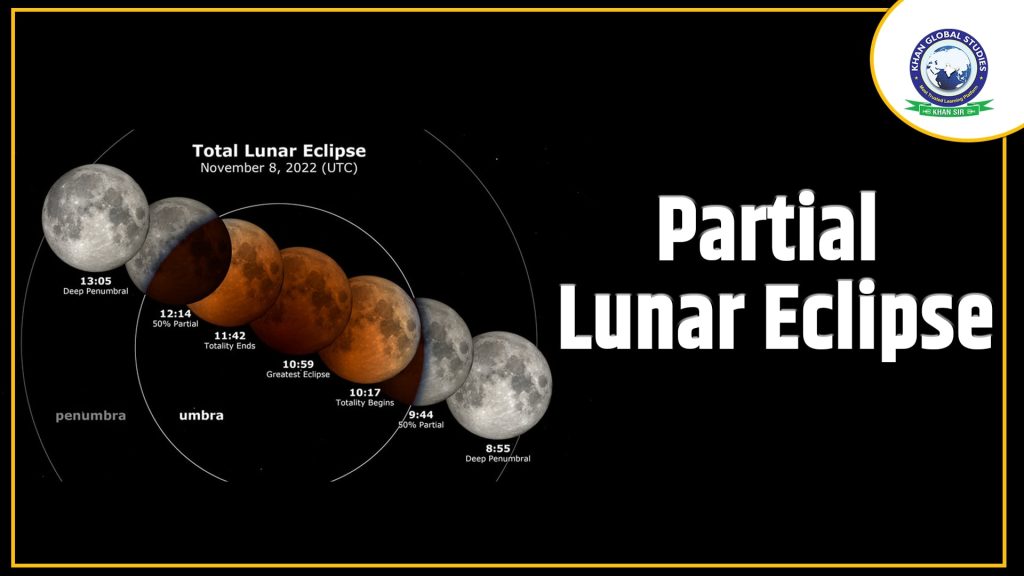
The Positional Astronomy Center of the Indian Meteorological Department has reported that the Moon will enter the penumbra, the dark region of the Earth, at midnight on October 28 and 29.
Overview
- The penumbra phase will begin in the early hours of October 29.
- The penumbral phase of the eclipse will begin at 01:05 pm on October 29 and end at 02:24 am as per Indian Standard Time (IST), which will last for approximately 1 hour 19 minutes.
- This phenomenon is visible from all parts of India and can be seen around midnight.
- This partial lunar eclipse will also be visible over a vast land area spanning the Western Pacific Ocean, Australia, Asia, Europe, Africa, the eastern part of South America, the northeastern part of North America, the Atlantic Ocean, the Indian Ocean and the South Pacific Ocean.
- The next lunar eclipse in India will occur on 7 September 2025, which will be a total lunar eclipse.
- The last lunar eclipse in India was observed on 8 November 2022 and was a total eclipse.
Lunar Eclipse
- A lunar eclipse occurs when the Moon falls into the Earth’s shadow. In this phenomenon the Earth is situated between the Sun and the Moon and the lunar eclipse can be seen only on the full moon day.
- A lunar eclipse is marked by two phases of the Moon entering Earth’s shadow.
- First, the Moon reaches Earth’s penumbra where Earth’s light is not completely blocked. Some parts of the Moon’s surface appear bluer than during normal full moon days.
- The Moon will enter the penumbra at midnight on October 28, with the penumbra phase beginning in the early hours of October 29.
- After this, the Moon reaches the Earth’s shadow, where the Sun’s light is completely blocked by the Earth. This means that light reflected from the Moon’s surface has already been refracted or bent by Earth’s atmosphere.
The shadow phase is the most important part of the eclipse.
- This occurs when the Moon passes through Earth’s shadow, which is the darkest and central part of Earth’s shadow.
- During this phase, the Moon directly aligns with Earth and is completely or partially immersed in Earth’s shadow.
- The Moon may appear red or coppery during this phase, often called a ‘blood moon’ because due to the scattering and refraction of sunlight in the Earth’s atmosphere, only longer wavelength red and orange light is visible. Can reach the moon and illuminate it.
- The penumbral phase of the October 28 lunar eclipse will begin at 1:05 a.m. on October 29 and end at 2:24 a.m.
Types of Lunar Eclipse
- Total lunar eclipse: A lunar eclipse occurs when the Sun, Earth, and Moon line up, and then the Moon passes through the Earth’s shadow. In a total lunar eclipse, the entire Moon is in the darkest part of Earth’s shadow, called the penumbra.
- When the Moon is within the penumbra its color becomes red. Because of this phenomenon, a lunar eclipse is sometimes called a “Blood Moon“.
- Partial lunar eclipse: The imperfect alignment of the Sun, Earth, and Moon results in the Moon passing through only a portion of Earth’s shadow. In this sequence, the shadow increases and does not cover the moon completely.
- Penumbral lunar eclipse: The Moon passes through the Earth’s penumbra or the faint outer part of its shadow. Due to this, the moon becomes so blurred that the difference cannot be felt.



